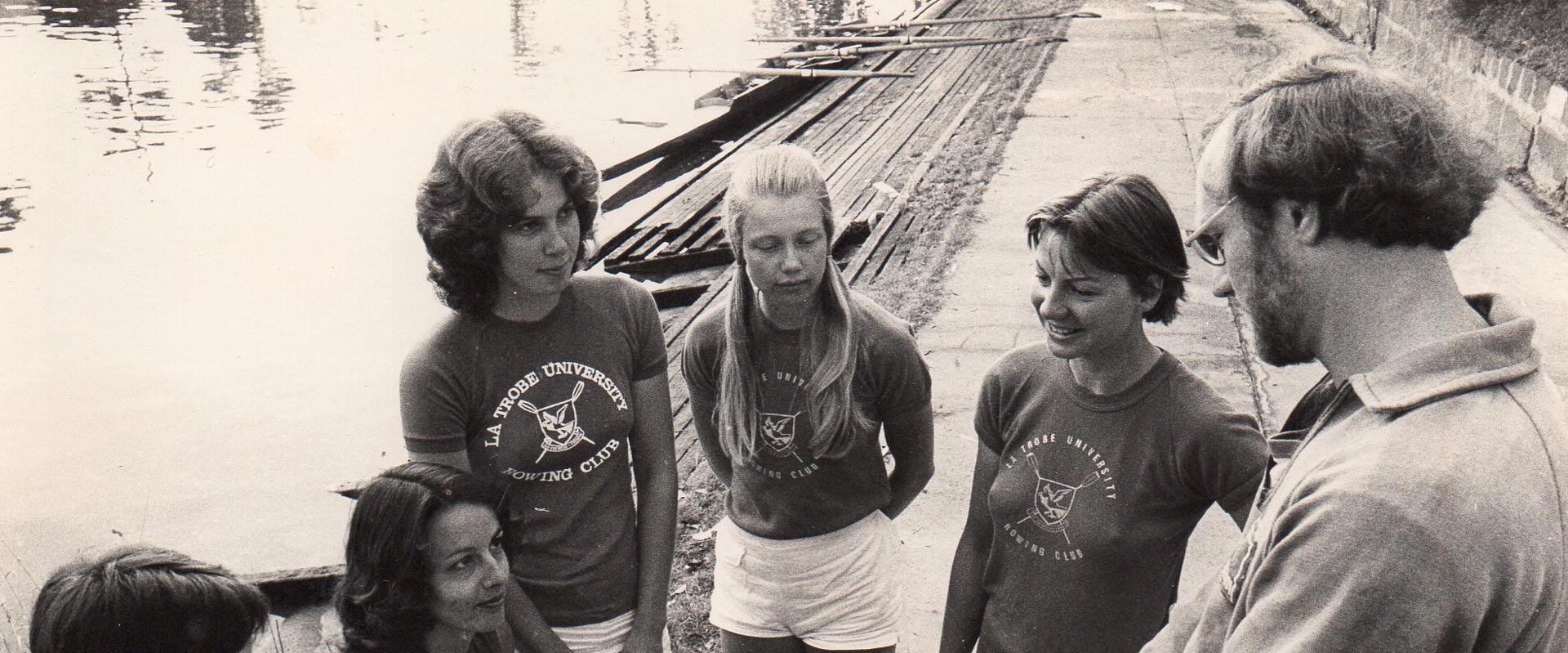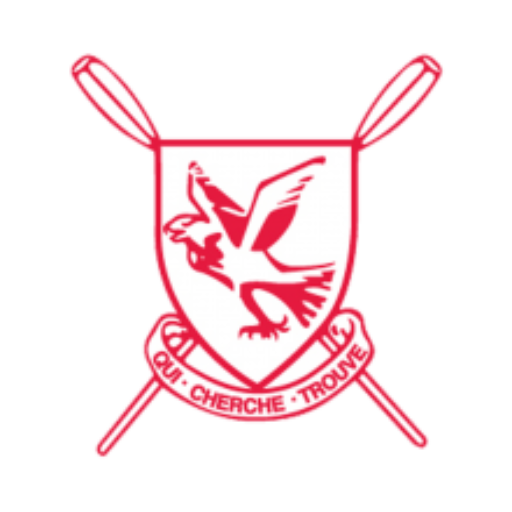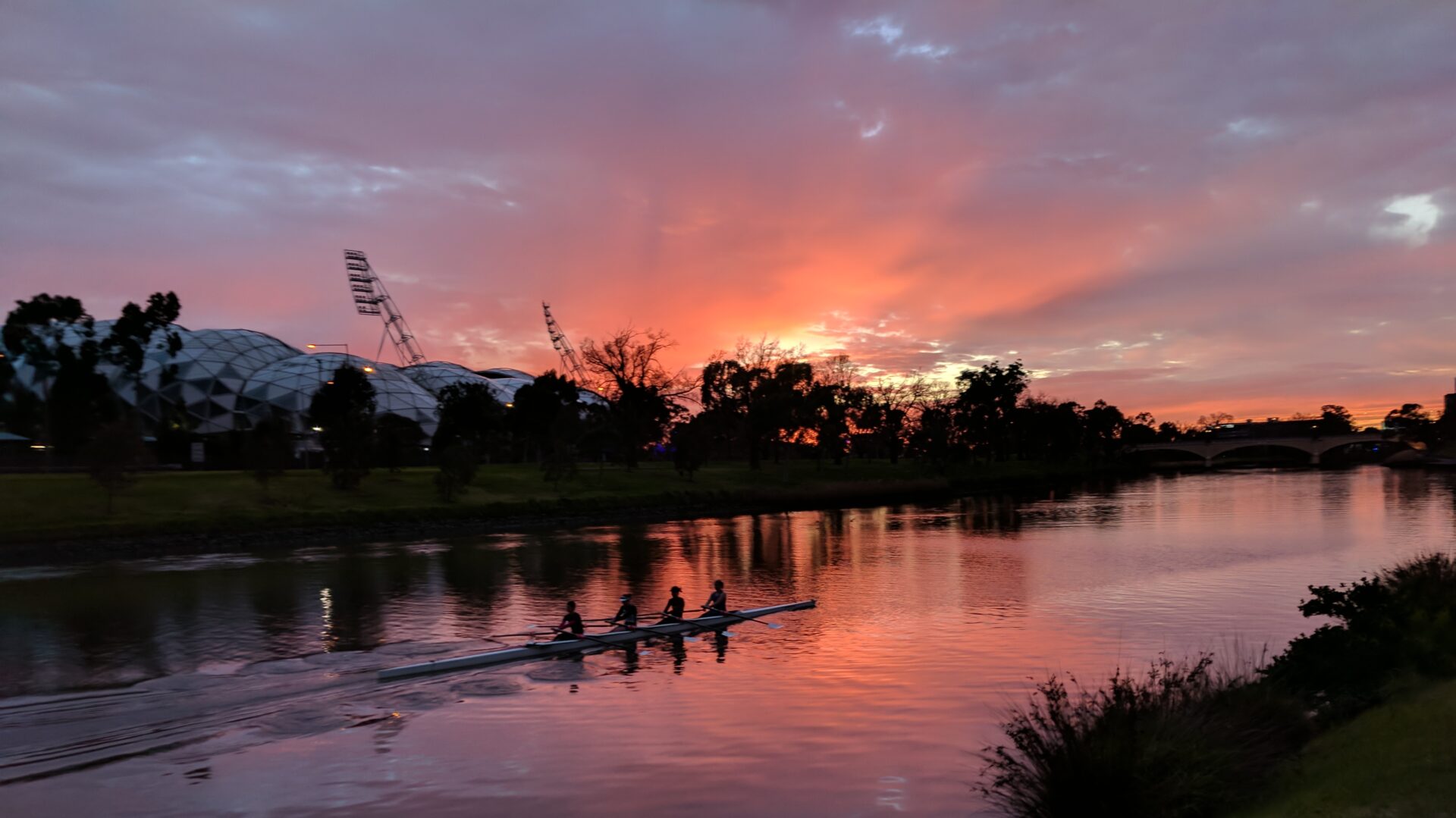
Early History of LURC
This piece was written by Andrew Armstrong just before the Club’s 40th anniversary dinner in October 2008. Sadly Andrew passed away two months after having attended and addressed the dinner.
The establishment of the La Trobe University Rowing Club in the context of the times, and the need for today’s members to seek to secure the history of a great club.
La Trobe University was established as part of the move to expand access to university education in Australia. Sir Archibald Glenn (Archie), the inaugural Chancellor had planned La Trobe along a collegiate model with all resident and non-resident students and staff belonging to a college – to provide opportunity for broad academic/educational development within a personalised membership. Ten colleges were planned. Glenn and Menzies Colleges were built with college union/administration buildings and attached residential wings ready for the first student intake in 1967. The colleges were to be controlled through the traditional academic ‘Master’ system. Resulting from the growth of student power through the Vietnam War situation, original plans were soon modified. I arrived about April 1968 but only got to wear a gown for dinner once.
Masters were replaced by College Heads, normally from the academic staff, facilitating elected student/staff governing College General Committees. (The Glenn committee, at least, ran all aspects of the college, with a high level of competence and financial viabilty). The Collegiate system itself survived a few years before being overtaken by the normal university central Union system. Former military/related staff played a significant role in ensuring effective administration of the new university. Many early students were on bonded teaching placements, well funded but often not appropriate candidates for teaching careers.
There were local rowing facilities at Edwardes Lake, Reservoir, (4km from LaTrobe), where Preston Rowing Club had a shed (similar to MUBC), enabling an immediate uptake of rowing by La Trobe. Preston Rowing Club had a long but declining history as a Victorian rowing club. Preston still hosted the annual Victorian Sprint Championships. The rowing course was short being not more than 350m and required quick braking before the dam wall. Boats included clinker and normal ply pairs. Fours and sculls with timber canvas and old blades had been supplied by Melbourne Grammar.
This close locality and the spirit in Glenn students/staff formed the basis of LURC’s rowing history being able to accommodate novice rowing. This is pivotal to the history of LURC being a proper ‘rowing club’ providing all year round all level rowing.
I was a delayed entry to the 1968 La Trobe intake, having had a cartilage out as an outcome of voluntary service with Melbourne University Regiment. In the context of the new university the Registrar, General Tim Taylor gave entry to three of us on the bottom academic entry score but with an outlook beyond academic success.
Mens rowing had already commenced and there was a ‘boat’ club, mainly ex Ballarat College students from Glenn College, captained by Rod (Nobby) Baker, paddling at Edwardes Lake. (Editor’s note: David Herd was also in the boat with Nobby Baker in 1967.)
1969 intervarsity was to be at Ballarat and I felt we had to grow quickly.
An election resulted in my being appointed Foundation President of the La Trobe University Boat Club. ‘Boat’ not ‘Rowing’ club epitomised the intended culture of La Trobe and proved its use in providing start-up support from MUBC. (LURC quickly became our operational status.)
I registered the club with the Victorian Rowing Association (VRA), now Rowing Victoria, in 1968. The uniform colour was registered to comply with the University’s official ‘Signal Red’.
In compliance with the VRA initially ‘members’ were males only. Few women rowed at the time. However, I arranged a formal University membership category of ‘social members’ with white singlets/windcheaters to enable female rowing. Early on Angela Jujevic, an experienced oarswoman, joined us from (Nestles?). LURC was one of the first clubs to provide fully integrated rowing. This has undoubtably led to one of our greatest strengths and benefits.
In addition to growing the rowing I also became very active within Glenn College and soon moved in as I did not have time to go home at nights. Significantly, I took control of the union building, opening all areas to students and adding proverbial pool tables etc. 1969 student clubs orientation was held in the Glenn Airport lounge (substantial top floor/balcony overlooking the moat etc.) Entry was by the central stairway with the La Trobe University Boat Club controlling entry into the lounge – as a result many new members were recruited
The new member intake included a mix of good experienced rowers and students with a quick learning potential – we now needed boats, oars, etc. for intervarsity.
Acknowledged as helping to build the character of La Trobe University I did not have to force my way into the executive University offices (unlike others of the time!) The Vice-Chancellor, Dr David Myers was often good for a helpful chat – especially around morning tea time.
The VRA bought a new VIII for each King’s Cup. 1969 La Trobe bought the Sergent & Burton, hired it to the VRA, saving them sales tax and giving us a good long lasting treasure. Funding was raised by my approaching major companies, for example Archie Glenn headed ICI and my Howqua property neighbour was chairman of BHP. Andrew Robertson’s mother (Nancy) organised support of a traditional mother’s club for which she was made a Life Member.
We needed a uniform insignia. As the La Trobe crest is registered through the College of Arms it cannot be defaced, so Tim Taylor would not allow us a shield with oars behind. Instead he enabled me to arrange, through professional design, our crested eagle for use by University clubs. Annette Holland holds the original print block for the club.
Intervarsity training was disjointed, as we had to beg boat storage at several locations. However in its first intervarsity LURC boated all crew categories!
Coaching the intervarsity crews were David Boykett and Simon Newcomb – rowing legends of their time. Accommodation at intervarsity was a boatshed floor over Lake Wendouree and it was bloody freezing.
The regatta was of a high standard and the VIII was competitive, finishing third in the B Final; stroked by John Swaney we had other numerous top school rowers. The Lightweight IV was mainly ex Caulfield Grammar. They trained in one of the ancient Preston IVs and then raced in a new Sergent & Burton quickly provided by SARA for the competition. The pair lost by miles but gained financial sympathy for trying. While the scull – a borrowed boat with a good sculler – memorably sank on the finish line. The Chairman of Carlton & United Brewery (CUB) who had watched the sculling race said to me, “Well tried Andrew”. CUB subsequently paid for a new scull. Overall the results must be seen in the context of quick development and the short training time.
More details and the results of the 1969 intervarsity regatta can be found on Guerin-Foster’s History of Australian Rowing website.
Other points relevant to LURC development:
The colleges being close to Edwardes Lake enhanced our ability to introduce students to rowing, thereby indicating to SARA ‘a high club membership’. This facilitated administrative support and my annoying Peter Whitehead, Secretary of SARA to ensure rowing got large budgets.
Subsequent to our using intervarsity to gain good corporate funding, SARA was not amused when seeking corporate donations to be fobbed off as LURC had got in first.
As part of the new radicalism ‘fun’ was taboo. Flour bomb fights were limited to the moat area. There was an annual moat race and yes a tub pair did make it all the way over the walls
We did not tolerate anyone attending a political demonstration in our official uniform. Tony Maine was the only one to do it. Yes we were conservative, not necessarily because of political outlook but successful crew rowing requires good team character and we were offering substantial life-development to members new to university education. Some of us had political fun – the night Ho Chi Min died many posters of him were removed from the Agora, updated over coffee in Andrew Robertson’s room in Menzies and then replaced in the Agora signifying – “Dead Issue”.
Preston Rowing Club had hoped La Trobe would provide their revival. However, the rowing area was too small and we were to be our own entity – spurred on by the opportunity of the 1969 intervarsity.
As Preston declined, the fireplace was fed by dropping old oars down the chimney.
Despite their club’s decline, in true local government fashion Preston Council decided a new shed was needed, with an increase in rates to be paid by their club! After the typical rowing shed arson (sorry demolition) a new brick complex was built to accommodate rowing and sailing. The rowing was eventually replaced by an art club. I still reckon LURC should have continued beginners/novice rowing at Preston – given its easy access.
I had moved some old sculls, which were good fun, to the roof of ‘the Barnes’ (La Trobe’s works area). Unfortunately like La Trobe’s historical records they disappeared without consultation.
I had had oar racks built in the Menzies Tunnel (the intended rifle range was dropped due to the political situation!). Remaining old blades were passed to Dave Hume to support continuation of the annual Anglesea New Year’s Day regatta.
The value of the initial military background in Administration was demonstrated by Joan Price, the inaugural archivist who cheerfully wandered the campus and facilitated proper securing of records, which are of particular historical significance when establishing an enterprise, e.g. the letter of our registration with the VRA, details of early membership and the 1969 intervarsity. Recently, touring the World War II Cabinet Room under Victoria Barracks I was enthralled to see Joan’s photo amongst the wartime staff – she demonstrated the qualities destined for the new La Trobe.
Unfortunately, over time SARA and Glenn College etc. have dumped their history. Facilitating celebration of Glenn College’s 40th anniversary last year, I found they did not know about non resident membership, nor the existence of us early Glenn Life Members (despite a board of record in the dining room). La Trobe ran a 40th anniversary cocktail party for graduates – proudly announcing 600 acceptances. Well about 300 turned up – covering not just the early days but the full 40 years. The University had stripped its database to those with email addresses. This can come at a high cost as early members make out their Wills, demonstrate long term success and can be called on to support survival of a club or institution.
Fortunately, with Glenn College I found a number of ex students have kept memorabilia and lists of students, particular to their interests/time. In such situations I tell them to hold these treasures (most won’t let go), record their memories and ensure people of like mind know who has what.
This 40th celebration is a good time for the club to scratch around and see what treasures/significant memories are held by former members. For example I have the original ‘LURC’ windcheater from Beacham and Rattray, an old Grammar oar from Preston and a folder of some early member sign ups. Annette Holland holds significant records of the 1970s having been a very valued long serving LURC secretary. I have just caught up with Rolland Orchard who has a good memory and contacts from his period 1969-1972. If you find any former members please establish ongoing contact and tell the current membership.
The Club’s development in close cooperation with the University gave us a fantastic base. The good will, good nature, commitment of the early rowers and support of the University epitomised the foundation of a rowing club which continues through to today in the same spirit – thank you.
I must extend my gratitude to those who have enabled LURC to be a continuing strength in my life for the last 40 years. In particular I am indebted to Meryll Evans. When she arrived I confess to a feeling of I’m never going to get this one to row well. How wrong I was. Not only has she proven a great rower but also the dedicated individual who has kept the Club going.
Warning: Any person or organisation thinking of harming LURC will find skeletons of great strength and proven commitment to save the Club.

